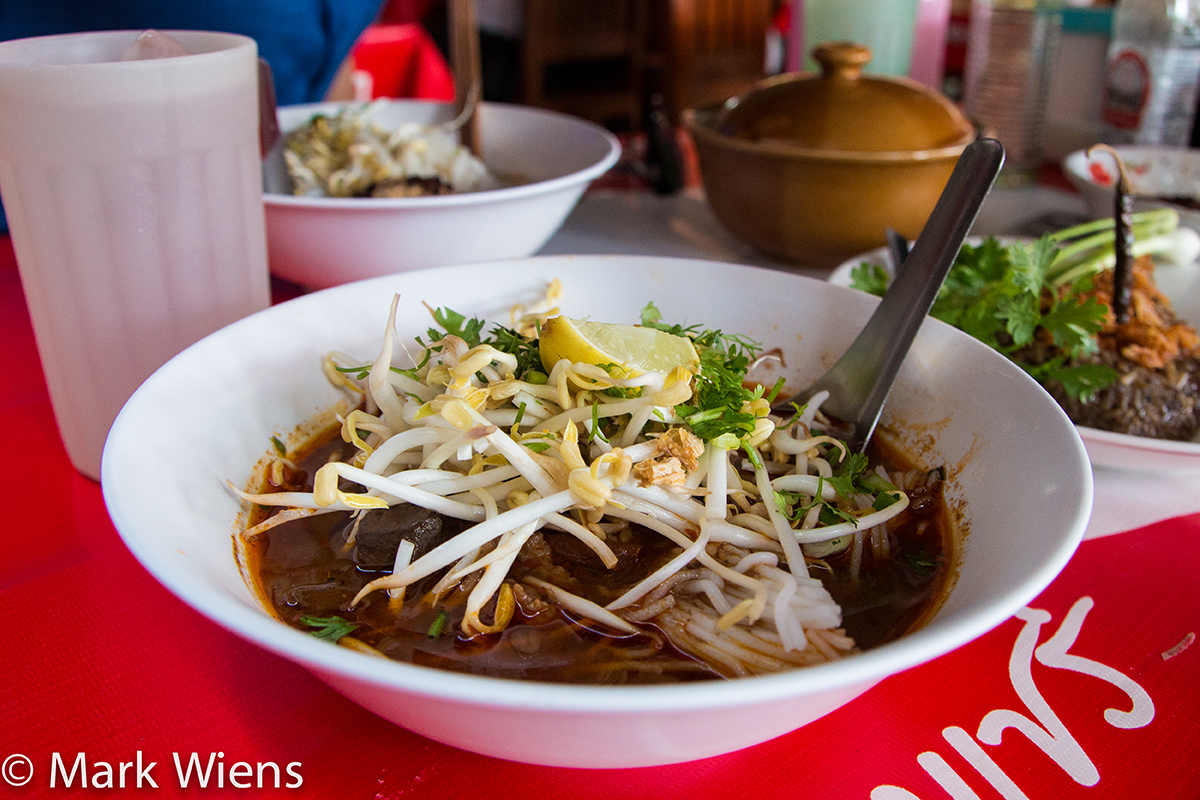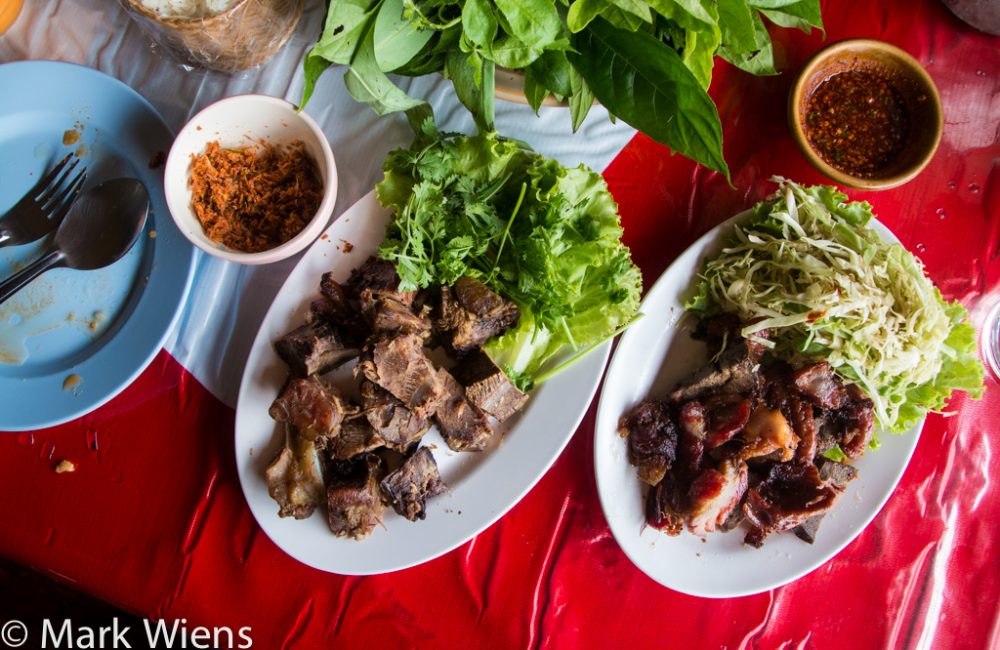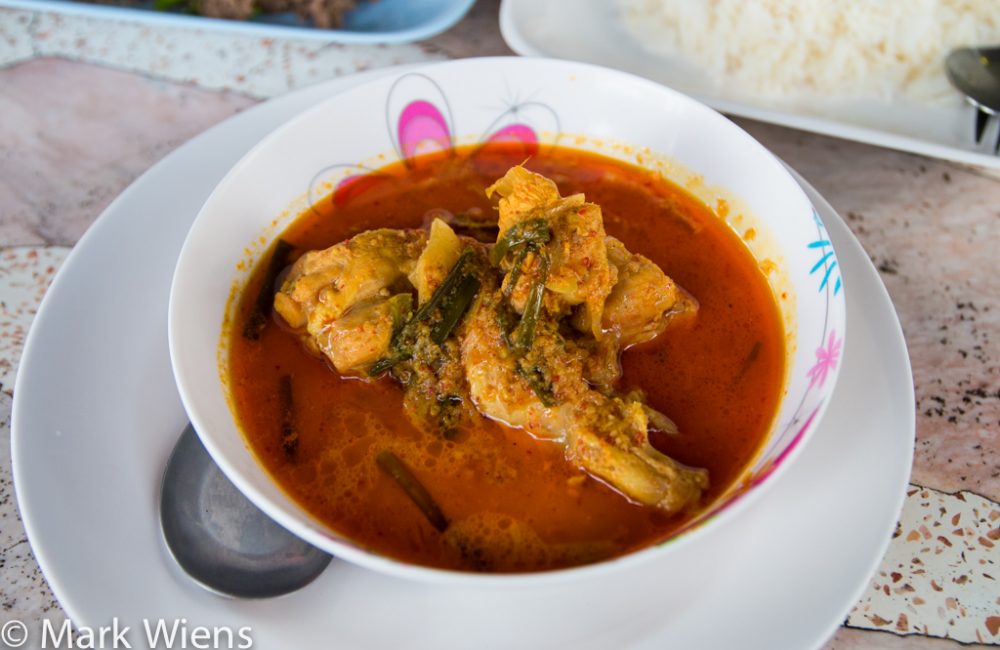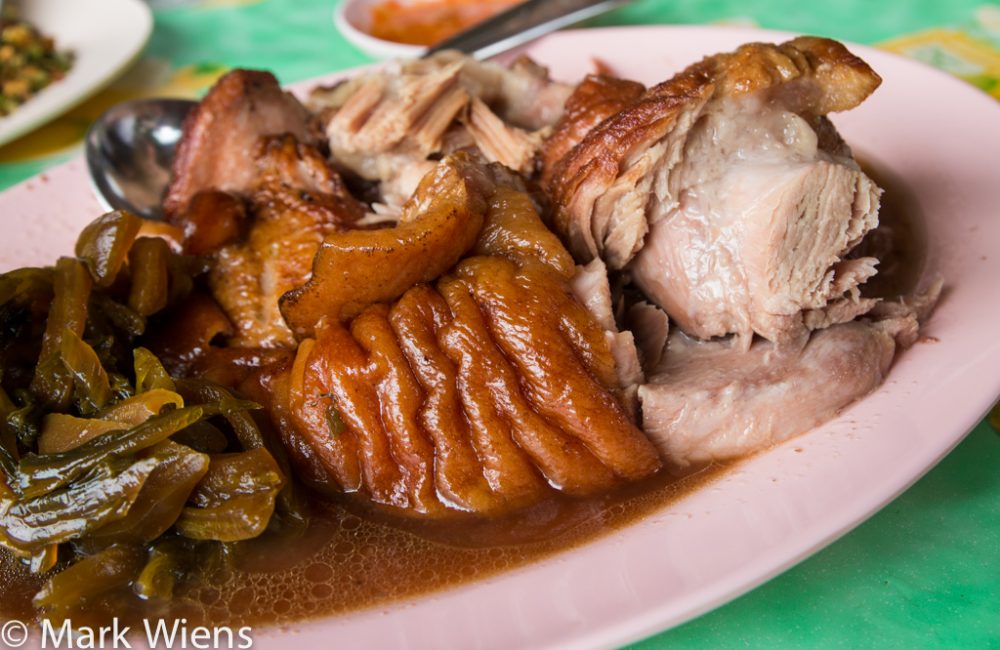A Smoky Bowl of Nam Ngiaw (น้ำเงี้ยว) in Chiang Rai


Nam Ngiaw Mawdin Pa Ead (น้ำเงี้ยวหม้อดิน ป้าอี๊ด) restaurant in Chiang Rai, Thailand
While khao soi is perhaps the most well known northern Thai dish among foreigners, nam ngiaw (น้ำเงี้ยว and you may also see it spelled nam ngeow or nam ngiao) might be the most beloved northern Thai dish in northern Thailand.
When locals from northern Thailand move to Bangkok or elsewhere in Thailand, nam ngiaw (น้ำเงี้ยว) is probably the dish they miss most from leaving home.
In Chiang Rai, nam ngiaw is common, and one of the most locally famous restaurants that serves it is called Nam Ngiaw Mawdin Pa Ead (น้ำเงี้ยวหม้อดิน ป้าอี๊ด).

A bowl of northern Thai nam ngiaw (น้ำเงี้ยว)
What is nam ngiaw (น้ำเงี้ยว)?
Nam ngiaw (น้ำเงี้ยว) is sort of like a stew, with influence from Burma and southern Yunnan, often made with a tangy tomato base, that includes dry roasted chilies, pork bones or beef, and cubes of congealed blood.
Another signature ingredient in the recipe is dok ngiew (ดอกงิ้ว), the dried flowers of the red cotton tree.
The stew is typically served with khanom jeen, fresh rice noodles, and it often comes with a variety of raw vegetables like bean sprouts and cilantro, with lime wedges and dry chili flakes to garnish.
Within northern Thailand there are many different versions of nam ngiaw, dictated according to province and location, each with a similar yet slightly different taste and choice of spice and ingredients.
Sometimes nam ngiaw can be more tart and tomatoey, other times it’s more smoky from dried chilies with oily broth.

The dining room of the restaurant
The Restaurant
Nam Ngiaw Mawdin Pa Ead (น้ำเงี้ยวหม้อดิน ป้าอี๊ด) is a pretty low-key typical restaurant in Chiang Rai, just a big roof with rows of tables.
You can see how popular the restaurant is as soon as you enter, as all tables are plastered in red True Move (a major Thai communications company) tablecloths – restaurant advertising in Thailand.
I didn’t notice an English menu, but you really only have a few different choices of what to order, the most popular items being what I ordered below.

Khanom jeen nam ngiaw neua (ขนมจีนน้ำเงี้ยวเนื้อ) – version with beef
Khanom jeen nam ngiaw neua (ขนมจีนน้ำเงี้ยวเนื้อ)
I ordered my bowl of nam ngiaw (น้ำเงี้ยว) over the top of khanom jeen noodles (ขนมจีน) and with beef.
From other versions I had eaten in both Chiang Mai and Lampang, I could immediately see the color of the stew was very dark in comparison.
It had a rich oily and smoky aroma to it, and it was served with bean sprouts, cilantro, and a wedge of lime, directly on top.
Price – 30 THB

One of my favorite condiments in the world
Their roasted dried chili flakes were incredible. It was approaching the wonders of some of the chili oils I’ve had in China before, but this was less oily and more spicy.
I loaded up my bowl of nam ngiaw with the dry chili flakes and a squeeze of lime, so each bite slightly burned my lips, the way I like it!

Halfway through my bowl of nam ngiaw
The nam ngiaw (น้ำเงี้ยว) was not sweet or tart at all – I’m not sure if tomatoes were used in their recipe, but if so, it was very light on the tomatoes.
What really came through was the smoky chili flavor, and the beef, as well as plenty, probably a bit too much oil, for my personal preference.
However, though it looked spicy, the broth itself, without adding any chilies myself, wasn’t really spicy at all.
It was good, but I think for myself, comparing it to other versions I’ve had that have a more tomato tartness, this wasn’t my favorite version nam ngiaw.
But just know this is my personal taste for nam ngiaw preference – I believe for Chiang Rai, this style is common and one of this restaurant is by all means one of the most popular.

Khao kan jeen (ข้าวกั้นจิ้น) – the star of the restaurant
Khao kan jeen (ข้าวกั้นจิ้น)
While khanom jeen nam ngiaw is the most famous dish at Nam Ngiaw Mawdin Pa Ead (น้ำเงี้ยวหม้อดิน ป้าอี๊ด), I didn’t notice a table that hadn’t ordered a plate of khao kan jeen (ข้าวกั้นจิ้น) – also known as khao ngiaw (ข้าวเงี้ยว.
Khao kan jeen (ข้าวกั้นจิ้น) is another dish only available in northern Thailand made with rice mixed with pig’s blood then steamed in a banana leaf.
The result is almost a rice meatloaf, extremely fragrant and oily rice, and the garnish of dry fried chilies and crispy fried shallots, in this case, was fantastic.
Price – 10 THB per portion

This was my favorite thing at the restaurant
Don’t let the pig’s blood throw you off, if you didn’t know there was pig’s blood in it, you’d never know!
Just like the nam ngiaw, you could go to different regions of northern Thailand and even different restaurants, and each time the khao kan jeen (ข้าวกั้นจิ้น) will be a little different.
The version of khao kan jeen (ข้าวกั้นจิ้น) at Nam Ngiaw Mawdin Pa Ead (น้ำเงี้ยวหม้อดิน ป้าอี๊ด) was probably the best I’ve had so far.

A little oily, but incredibly fragrant
Although it was very greasy, the flavor of the rice, with the rich and mild sweetness from the blood, and the outrageously flavorful fried chili and crispy shallots, plus the fresh cilantro and green onions, was an incredible combination.
If you ever go to Chiang Rai and eat at this restaurant, along with a bowl of nam ngiaw, I actually thought the star of the restaurant was the khao kan jeen (ข้าวกั้นจิ้น).
Don’t miss it!

Nam Ngiaw Mawdin Pa Ead (น้ำเงี้ยวหม้อดิน ป้าอี๊ด)
Conclusion
Nam Ngiaw Mawdin Pa Ead (น้ำเงี้ยวหม้อดิน ป้าอี๊ด) is a very locally popular restaurant in Chiang Rai that specializes mainly in nam ngiaw (น้ำเงี้ยว) a rich and oily northern Thai stew.
While the actual dish of nam ngiaw was not my favorite here, the taste of the dish was very authentic to Chiang Rai, and it is a very local restaurant.
But the dish I really loved at Nam Ngiaw Mawdin Pa Ead (น้ำเงี้ยวหม้อดิน ป้าอี๊ด) was their khao kan jeen (ข้าวกั้นจิ้น), rice steamed with blood – it was incredible.
Nam Ngiaw Mawdin Pa Ead (น้ำเงี้ยวหม้อดิน ป้าอี๊ด) is a restaurant that’s worth checking out when you’re in Chiang Rai.
Nam Ngiaw Mawdin Pa Ead (น้ำเงี้ยวหม้อดิน ป้าอี๊ด)
Address: Thanon Pa Khun, Robwiang, Muang Chiang Rai, Chiang Rai 57000
Phone: 089-556-7672
Open hours: 8 am – 4 pm daily
Prices: bowls of khanom jeen nam ngiaw are 30 THB
ที่อยู่ ถนนพ่อขุน ,รอบเวียง , เมืองเชียงราย , เชียงราย 57000
โทร. 089-556-7672
How to get there: The restaurant is located on the east side of Chiang Rai, not far from many other great restaurants in the city. The easiest way to get there from the center of Chiang Rai is to jump in a quick taxi ride, or alternatively you can walk.
For the map, scroll down to northern Thailand, and click on the name of the restaurant:



